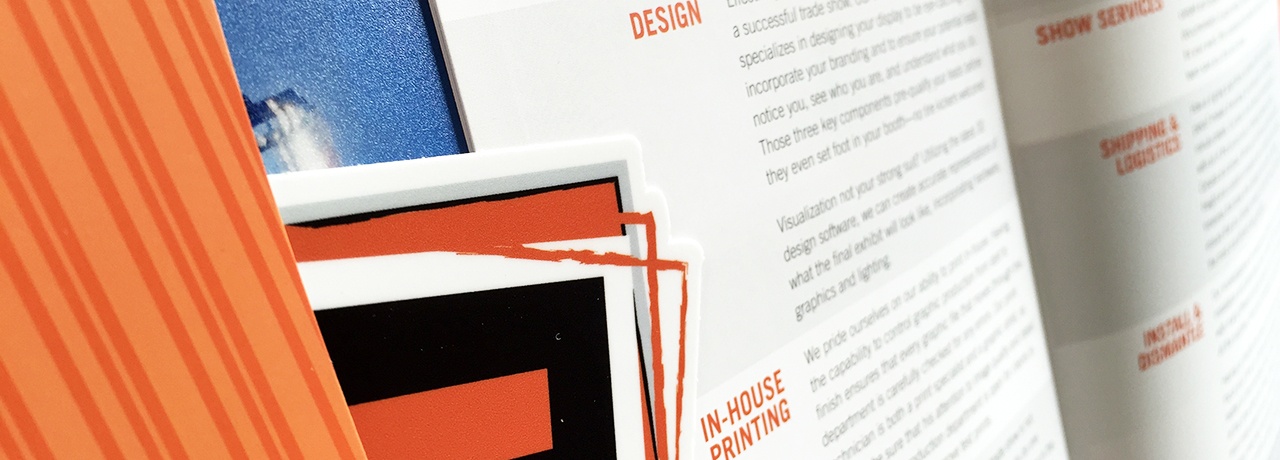- Home
- Blog
WHY EXHIBIT? Part III: Making Sales & Signing Contracts
Posted by Admin | Topics: Trade Show Strategy, Knowledge Base | on Jan 29, 2016 10:04:00 AM
Part III of our Why Exhibit? blog series is how to incorporate “Nurturing Leads & Sales” into your Trade Show Strategy. Read on for ideas on how to set your goals, meet them, and measure success when you want to develop leads and sales as part of your exhibit marketing plan.

Unless you’re at a buying show, making sales on the show floor, or getting leads to sign contracts then and there, can be tricky. Generally speaking, the audience at a show is there to window shop—to see what their options are, and then to re-group after the event and make a decision. If you want to make the sale before the show closes, you’ve got your work cut out for you. But on the plus side, you’ve eliminated your competition from your lead’s decision-making process!
Setting Your Goals
Your goal is pure numbers. Make sales. A certain number of sales, a certain quantity of units sold, or a dollar value. This is an easy goal to set. If this is your first time exhibiting, or your first time at a specific show, make your best educated guess. Whether your fail to meet that goal or exceed your expectations, you’ll at least have a baseline for next time.
Meeting Your Goals
Your focus will be twofold:
- Convince. If you want to sign contracts or sell products right on the show floor, you need to convince your audience your product or service is the best—compared to every other exhibitor with a similar product or service at this show.
- Persuade. You may find leads who have come to the show to buy, but you’ll have many others who are just there to shop. You need to persuade them to buy right now.
To convince and persuade, many of your best tactics will overlap. Here’s what you want to focus on:
- Pre-show promotion. Don’t skip this step! The leads you reach out to before the show—whether it’s through social media, digital or printed invitations, phone calls, or advertisements—will be that much further along the sales funnel when they see you at the show, and closer to that all-important buying stage. In your pre-show promotions you can also outline any special incentives you plan to offer…
- Offer an incentive. Make it a clear call to action. This will apply to your pre-show promotion, but focus on the show floor audience. Give them a reason to buy from you right now, at this specific show. Think about offering a free trial period, a flat discount, some kind of one-time offer they can only take advantage of if they buy from you at this event. And then make sure this offer is visible to everyone on the floor—extra signage in your booth, a digital presentation, specially printed clothing, etc.
- Train your staff. Your pre-show promotion and your call to action will draw leads to your space. Your staff need to have their sales pitch perfected. It needs to be short, effective, and convincing, without being trite or obnoxious. Make sure they understand their goals, and how to open—and how to close—their conversations with leads and other visitors.
- Develop great content. Any graphics, demonstrations, and digital presentations in your booth space need to drive home the message that your product is the most awesome—way better than your competition. Be creative with the activities and the graphics in your booth space. Do something unique that really engages your audience, and that also works on convincing and persuading while they’re engaged.
- Go off-site. Remember, many of your leads are window shopping at the show. One of the best ways to persuade them to buy is to take them away from the show floor and away from your competition. Book a conference room or meeting space that’s off-site and invite your leads to join you there—before, during, and after the show. You create an environment over which you have total control, and where there are no distractions. This is a great opportunity to give detailed answers, draft contracts, and close deals.
Measuring Success
If generating on-site sales is your goal, you’re in luck. This is the easiest metric to track at a show—just look at total sales generated during the event, and there you have it. However, if you can incorporate a system for determining what leveraged this sale (asking customers about their history with your product or service) during the show, or as part of a follow-up, you’ll have a better idea of how many direct sales the show generated.
This will get you started on a successful plan for making more sales and signing contracts right on the show floor. In our next Why Exhibit post we’ll discuss how to build your Trade Show Strategy when Marketing & Branding is your goal.
Questions? Comments? We’d love to hear from you, and happy to help!
Recent Blog Posts
Subscribe to the blog
Introduce Your Blog
Who's writing it? Why are they writing it? Why should potential readers pay attention to the people writing it? Introduce it in a few sentences, and maybe add a picture of the primary authors.
Posts by Topic
- Knowledge Base (41)
- Trade Show Strategy (26)
- Displays (16)
- Trade Shows (15)
- Insider (14)
- Trade Show (12)
- Graphic Design (10)
- Trade Show Budgets (10)
- Custom Displays (5)
- Graphics (5)
- Covid-19 (4)
- Experiential Activation (4)
- Portable (4)
- Events (3)
- Experiential Marketing (3)
- Fabrication (3)
- Office News (3)
- Portable Displays (3)
- Print and Production (3)
- A/V (2)
- Modular Displays (2)
- Technology (2)
- Trending (2)
- Branded Environments (1)
- Discounts (1)
- Experiential (1)
- Holidays (1)
- Installation (1)
- Pop-up (1)

